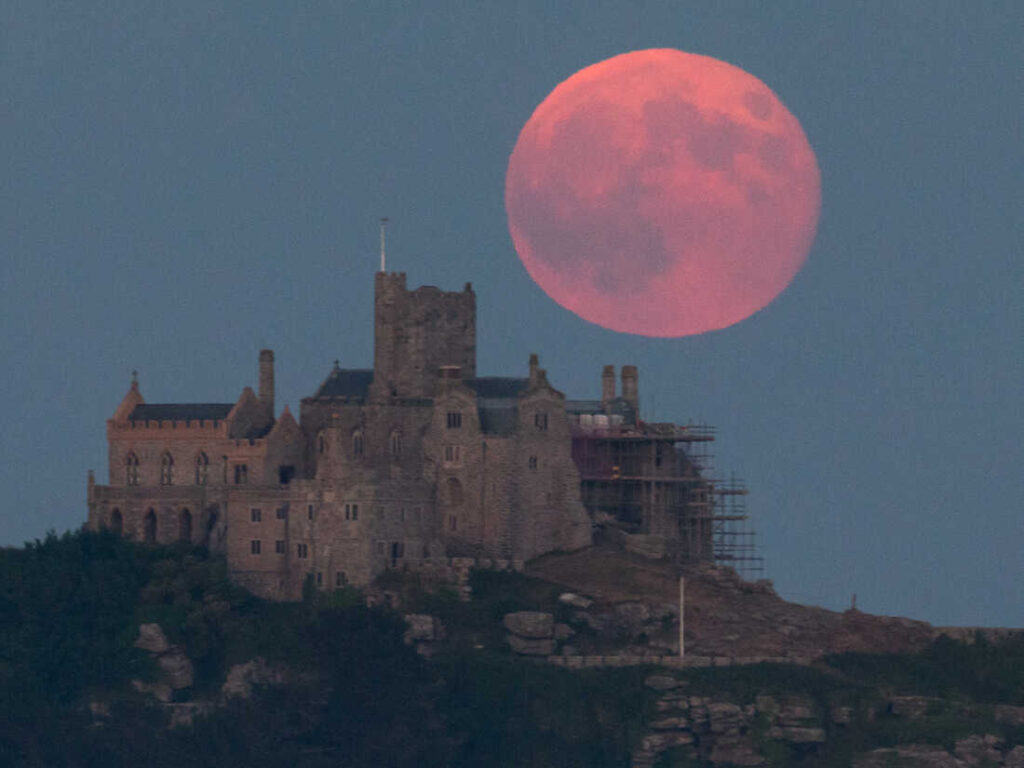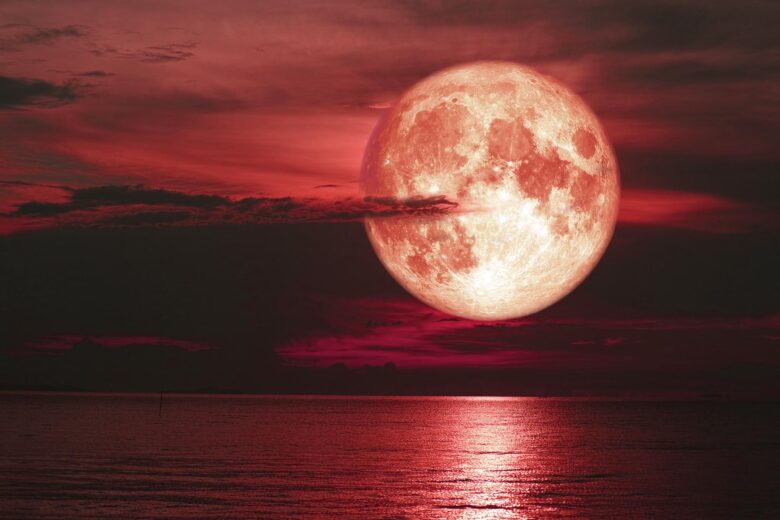Today, Sunday, June 4, is the full moon. The full moon rises in the eastern sky around dusk and sets in the western sky around sunrise the next day.
The June full moon is also called the “Strawberry Moon” in the U.S. agricultural calendar.

There is a chance to see it even in areas where the rainy season has begun!
The Japanese archipelago will be covered by high pressure from the south, and there will be relatively more clear skies for this time of year. This year, it has already been announced that the rainy season has begun in many areas west of the Tokai region, but tonight is a good chance to see the moon because the activity of the rainy season front is weakening.
However, the rainy season front is extending indistinctly from the continent to the East China Sea, which will likely bring more clouds to the Pacific side of western Japan and Amami.
In northern Japan, a low-pressure system with cold air overhead will pass through, resulting in cloudy skies over the Sea of Japan side of Hokkaido and Tohoku, with some localized rainfall.
Sunset and moonset times for various locations
Nemuro: Sunset 18:53, Moonrise 19:24
Sendai: Sunset 18:55, Moonrise 19:23
Tokyo: sunset 18:52, moonset 19:19
Osaka Sunset at 19:07, Moonrise at 19:33
Fukuoka Sunset at 19:24, Moonrise at 19:51
Naha Sunset at 19:18, Moonrise at 19:41
Full moon in June, “Strawberry Moon” in English
Native Americans gave names to the full moons seen in each month to keep track of the seasons, including animals, plants, seasonal events, and so on.
According to The Old Farmer’s Almanac, the typical name for the June full moon is “Strawberry Moon.
What is a full moon?
The moment of the full moon can be calculated based on the position of the sun, earth, and moon.
The full moon is defined as the moment when the difference between the direction of the sun and the direction of the moon (difference in ecliptic longitude) from the earth is 0 degrees (saku), 90 degrees (jogetsu) (half-moon), 180 degrees (full moon), and 270 degrees (shigetsu) (half-moon), which makes one revolution in about one month or less.
In other words, a full moon is defined as the moment when the sun and the moon are in almost opposite directions as seen from the earth (the sun, earth, and moon, in that order, are almost in a straight line).
This change in positional relationship changes the part of the moon that is illuminated by sunlight as seen from the earth, and thus the waxing and waning of the moon changes from crescent moon, waxing moon, full moon, waning moon, and so on.


コメント